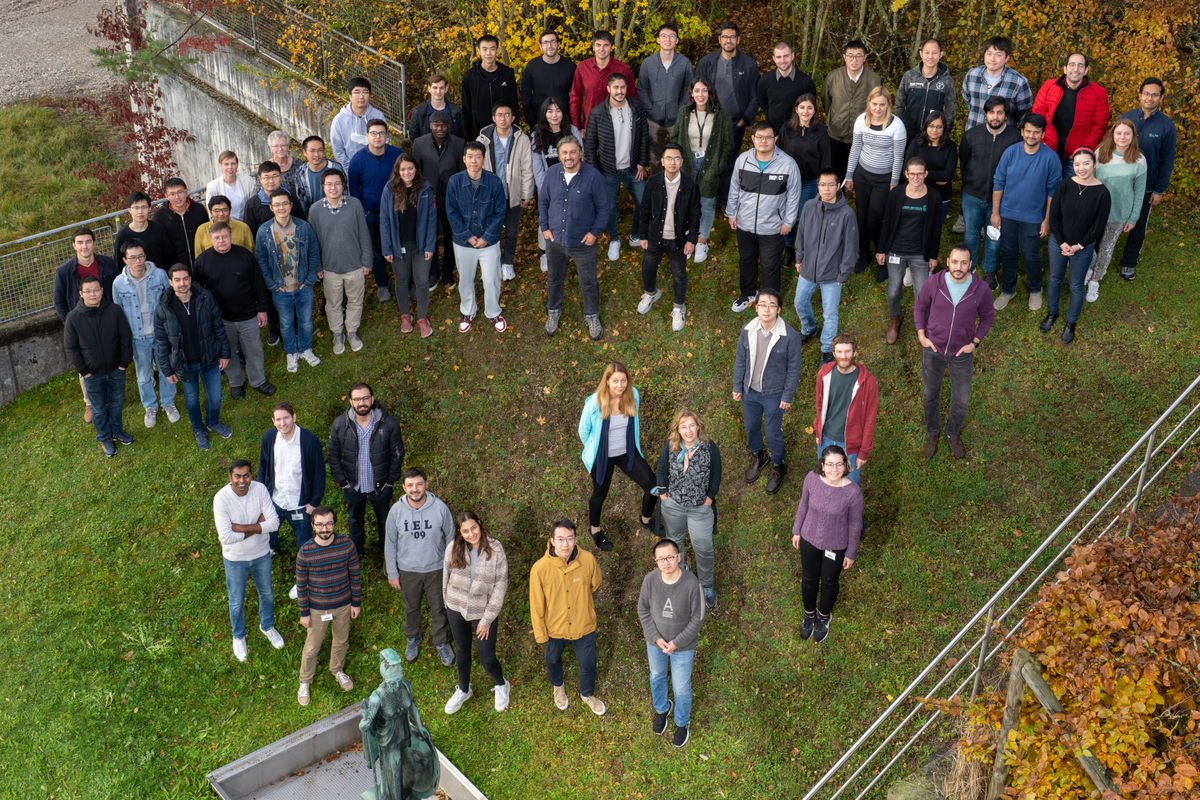Enhanced Flexible Mold Lifetime for Roll‐to‐Roll Scaled‐Up Manufacturing of Adhesive Complex Microstructures
Bioinspired Microstructured Adhesives with Facile and Fast Switchability for Part Manipulation in Dry and Wet Conditions
Smart Materials for manipulation and actuation of small-scale structures
3D nanofabrication of various materials for advanced multifunctional microrobots
Liquid Crystal Mesophase of Supercooled Liquid Gallium And Eutectic Gallium–Indium
Machine Learning-Based Pull-off and Shear Optimal Adhesive Microstructures
Information entropy to detect order in self-organizing systems
Individual and collective manipulation of multifunctional bimodal droplets in three dimensions
Microrobot collectives with reconfigurable morphologies and functions
Self-organization in heterogeneous and non-reciprocal regime
Biomimetic Emulsion Systems
Giant Unilamellar Vesicles for Designing Cell-like Microrobots
Bioinspired self-assembled colloidal collectives drifting in three dimensions underwater
Research Overview

The Physical Intelligence Department focuses on understanding and developing small-scale mobile robots with physical intelligence capabilities. These robots, constructed from smart materials and structures, derive their intelligence primarily from their design and collective behavior due to limited onboard capabilities. The research explores bioinspired, biohybrid, and synthetic design methods to create advanced physical intelligence in miniature robots, aiming to revolutionize medicine and healthcare through minimally invasive, implantable wireless medical robots.

Figure 1: Research Fields of the Physical Intelligence Department
The scientific mission of the Physical Intelligence Department is to understand the underlying principles of design, locomotion, control, and physical intelligence of single and collectives of scale-mobile robots made of multifunctional smart materials, structures, and mechanisms. Since tiny wireless robots are inherently limited in onboard computation, actuation, powering, perception, and control capabilities, their intelligence dominantly or completely comes from their body and collective physical intelligence.
Therefore, our group is investigating new methods to create advanced physical intelligence capabilities in small-scale mobile robots using various design approaches, such as bio-inspired by small-scale biological organisms, integrated with live biological cells or biomaterials, and fully abstract and synthetic design methods. As our societal mission and translational research focus, we aim to use these tiny robots as minimally invasive and implantable wireless medical robots inside our bodies to revolutionize medicine and healthcare.
Our department currently has five main research thrusts: to create new physical intelligence platforms at a small scale, to understand them in detail, and to realize and implement them on novel milli- and microscale mobile robots towards minimally invasive medical applications inside the human body.
- First, we investigate new physical intelligence methods using passive and active stimuli-responsive multifunctional material compositions, structures, and mechanisms.
- Second, we study the design, fabrication, locomotion, and control of milliscale mobile robots with physical intelligence capabilities, such as shape/stiffness programmability, physical adaptation, adaptive locomotion, and multifunctionality, enabled by their bioinspired soft or compliant smart body materials, structures, and mechanisms.
- Third, we study microscale mobile robots' design, fabrication, locomotion, and control, which are much more challenging than insect-size robots. Biohybrid designs integrate genetically engineered bacterium and alga type of microorganisms into the designed robot bodies to enable self-propulsion, taxis-based sensory locomotion control, and active cargo transport and delivery type of functions adaptively in biological media. Synthetic microrobots are actuated by external magnetic fields, acoustic waves, or light to swim or surface roll/crawl inside the complex fluids and tissues of the human body.
- Fourth, since single microrobots are hard to see and limited with their payload-carrying capability and applied forces to the environment, a large number of these mobile microrobots are designed to self-organize at the air-water interface or inside liquids and are controlled remotely to have a reconfigurable morphology and collective navigation and manipulation capabilities.